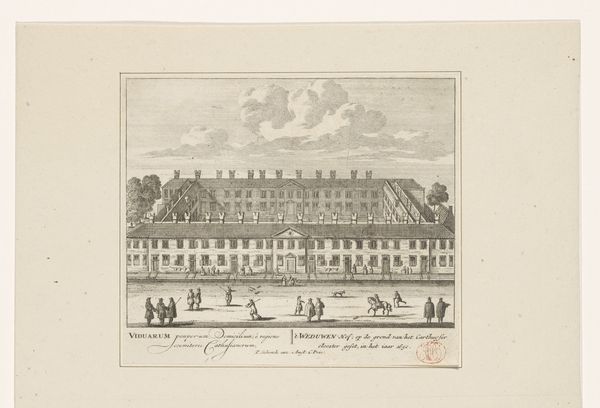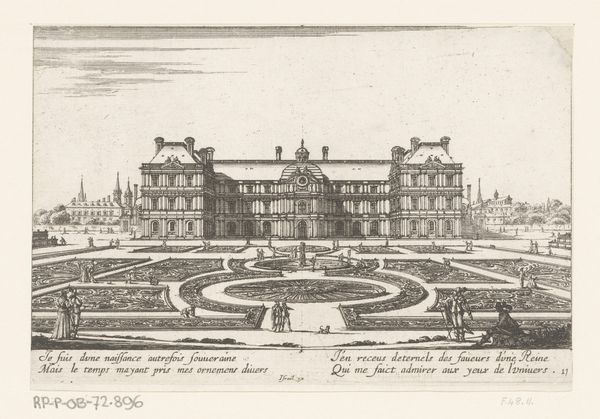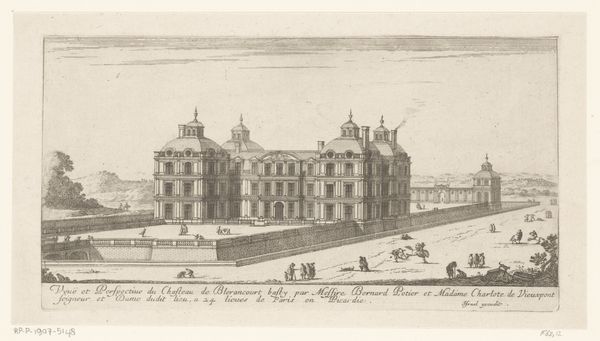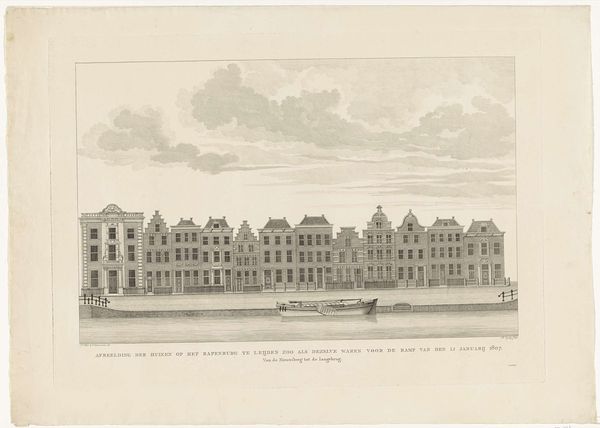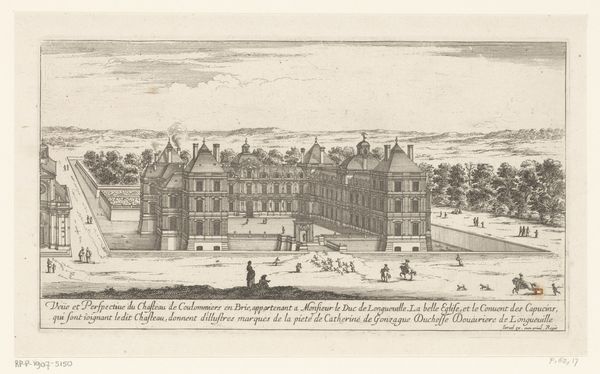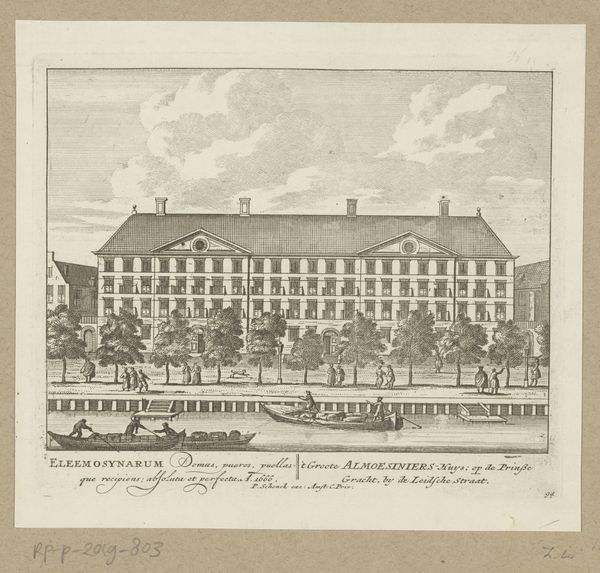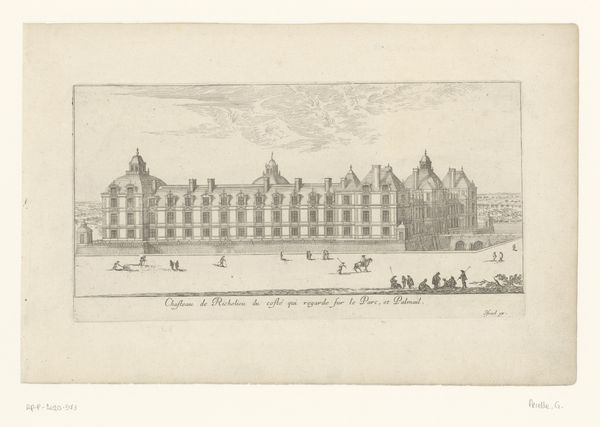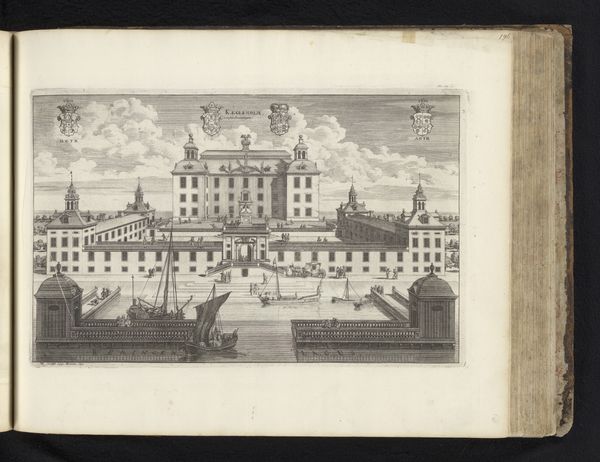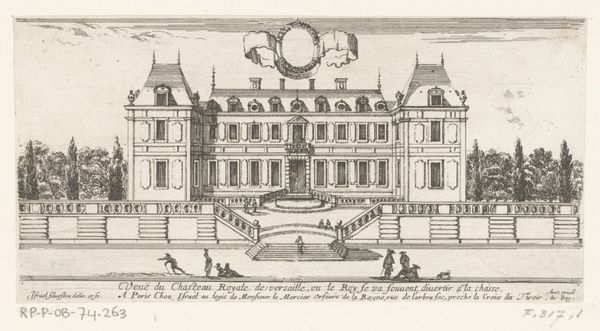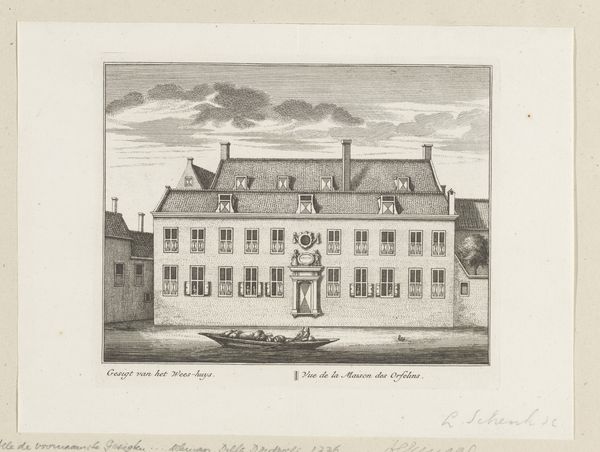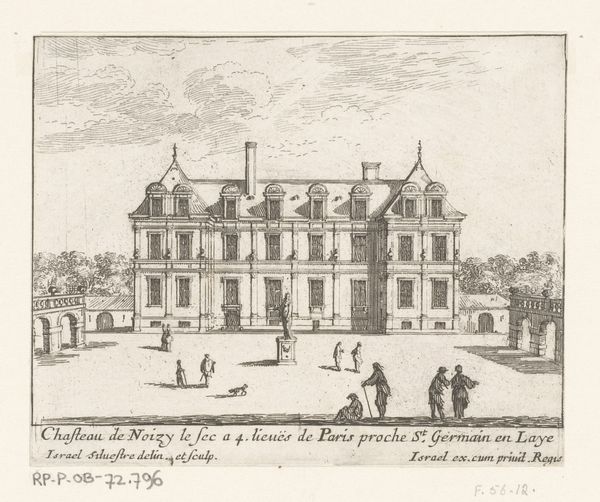
Paleis Honselaarsdijk van achteren gezien Possibly 1696 - 1774
0:00
0:00
print, engraving, architecture
#
baroque
# print
#
cityscape
#
engraving
#
architecture
Dimensions: height 140 mm, width 170 mm
Copyright: Rijks Museum: Open Domain
Curator: Here we have an engraving titled “Paleis Honselaarsdijk van achteren gezien,” or "Honselaarsdijk Palace Seen From the Back," dating from around 1696 to 1774, attributed to Cornelis Danckerts II, housed right here at the Rijksmuseum. Editor: My first thought is symmetry, an almost chillingly perfect balance. It’s architectural, but it almost feels more like a stage set. Look at those figures; are they walking, waiting, or posing? The light seems flat, somehow. Curator: Baroque architecture prized symmetry, yes, reflecting order and divine harmony, not necessarily stagecraft, but this could be staged for the monarchy. Notice how the architectural elements like the balconies, windows and even the rooftop decorations mimic each other on both sides of the central axis. This emphasis can act as visual mnemonics, reinforcing social structures. Editor: It's undeniably skillful, but what's going on at ground level interests me more. Look at the figures. Engraving demanded incredible precision. Can we know if this was commissioned by someone at the Palace? How were the materials sourced? What about the labor involved in its making? Curator: It's believed to be from a series depicting Dutch palaces. Considering its timeframe, the Palace held significant political power and wealth, these visual emblems played a powerful role. But more than just showing power, palaces such as this also reflect ideas of aspiration. A key role of symbolic display. Editor: Aspiration, perhaps, but it also locks into a system. Engravings like this replicated easily and disseminated power, one that served the Palaces interest over anything else. Where's the raw earth, the garden labor, the cost in human toil required to upkeep all this order and symmetry? That labour is abstracted away. Curator: True, this sanitized view served to solidify power structures through strategic visual omission. We see not the construction or toil, but rather a testament to the order and reason, both of this universe and to the Palace. Editor: I think this tension between grand depiction and the unseen labour makes these prints so compelling today, though. A fascinating window onto what they wanted us to see, and what they conveniently left out. Curator: Exactly! It forces us to confront what a building really signifies—whose vision it represents and who pays for its upkeep. Editor: Indeed, the symbolic resonates differently when we trace its roots back to the ground, the materials, and the making.
Comments
No comments
Be the first to comment and join the conversation on the ultimate creative platform.
